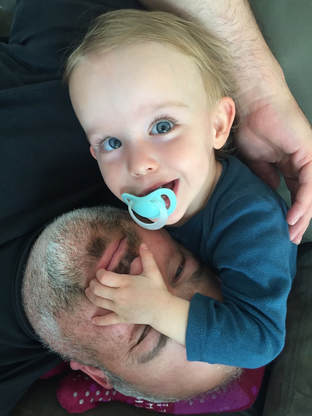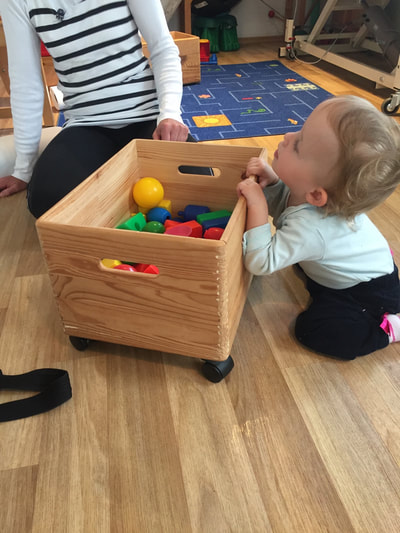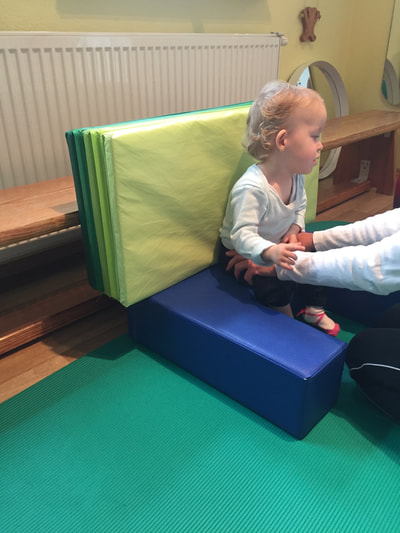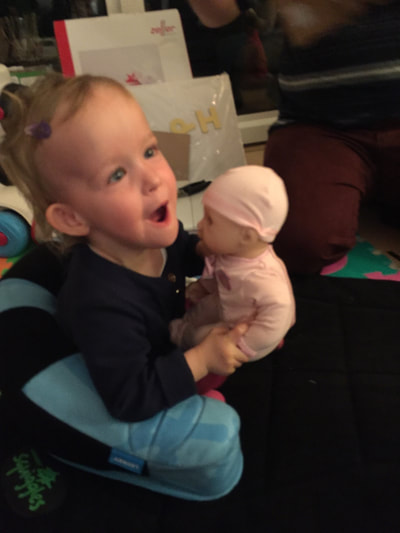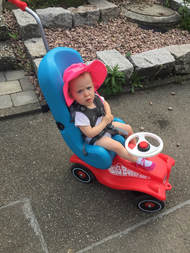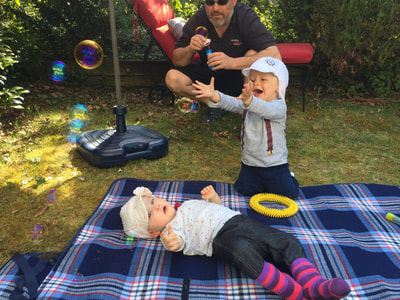Click to set custom HTML
Right Now
Right now, Pia can talk, military crawl, sit for a few seconds unassisted, roll over, laugh, cry, bite (!), kiss, hug ……. she continues to develop. Every. Single. Day.
And we look forward to what her future will bring.
We are so proud of her. We are proud of the family we have become during these last two years.
And, at times, during these last two years, the days have been filled with numerous what if’s, when's and how’s, keeping us up at night bringing questions, hope and tears.
Right now, Pia can talk, military crawl, sit for a few seconds unassisted, roll over, laugh, cry, bite (!), kiss, hug ……. she continues to develop. Every. Single. Day.
And we look forward to what her future will bring.
We are so proud of her. We are proud of the family we have become during these last two years.
And, at times, during these last two years, the days have been filled with numerous what if’s, when's and how’s, keeping us up at night bringing questions, hope and tears.
Understanding Pia's Type of Cerebral Palsy
Our muscles get signals all the time. Otherwise they’d be soft and limp. With CP, some muscles get too many of these signals.
Such is the case with Pia. She has too many signals, causing her muscles in her arms and legs to be 'tight'.
Pia has quadriplegic (all four limbs affected) spastic CP, the most common form of CP, affecting her legs more than her arms.
Our muscles get signals all the time. Otherwise they’d be soft and limp. With CP, some muscles get too many of these signals.
Such is the case with Pia. She has too many signals, causing her muscles in her arms and legs to be 'tight'.
Pia has quadriplegic (all four limbs affected) spastic CP, the most common form of CP, affecting her legs more than her arms.
What We Need
We need your help to keep the way bright and hopeful for Pia’s Path to Walk.
We need your help to give her the chance to run around with her twin brother, Felix, hike with us as a family, climb stairs, ride a bike, splash in the rain puddles and bath tub, play with friends, pick up leaves in the fall.
We need your help to give her the independence and dignity she needs and deserves now and for her future, from moving, eating, dressing and going to the bathroom on her own.
All of those things you wish and dream for your own children, we wish for Pia.
We are willing to do whatever it takes to support Pia.
But we can't do it alone and need your help.
We need your help to keep the way bright and hopeful for Pia’s Path to Walk.
We need your help to give her the chance to run around with her twin brother, Felix, hike with us as a family, climb stairs, ride a bike, splash in the rain puddles and bath tub, play with friends, pick up leaves in the fall.
We need your help to give her the independence and dignity she needs and deserves now and for her future, from moving, eating, dressing and going to the bathroom on her own.
All of those things you wish and dream for your own children, we wish for Pia.
We are willing to do whatever it takes to support Pia.
But we can't do it alone and need your help.
Pia's Future
For Pia, the main battle is against her constant muscle tightness (spasticity). While CP itself isn’t degenerative or progressive, spasticity is!
As time goes by, it will cause permanent deformities in Pia's bones and muscles that cannot be fixed.
This is why it is so important to reduce or eliminate the spasticity at an early age.
For Pia, the main battle is against her constant muscle tightness (spasticity). While CP itself isn’t degenerative or progressive, spasticity is!
As time goes by, it will cause permanent deformities in Pia's bones and muscles that cannot be fixed.
This is why it is so important to reduce or eliminate the spasticity at an early age.
At present, SDR is the only surgical procedure that can provide permanent reduction of spasticity in CP.
What will your donation support right now?
The SDR surgery and the years of required physical therapy following. As we are not residents of the US, we are responsible for the costs and it is not covered by our insurance here in Germany.
After surgery, Pia will require physical therapy 5x/week for the first six months, 4x/week a week for the following six months and 2-4x/week for at least the following two years, based on her progress.
Based on information provided by St. Louis Children’s Hospital, the surgical costs, mandatory post-op therapy and rehab, flights, accommodations and required physical therapy and strength training for 2-years following the surgery, we need to raise $125,000 USD.
The SDR surgery and the years of required physical therapy following. As we are not residents of the US, we are responsible for the costs and it is not covered by our insurance here in Germany.
After surgery, Pia will require physical therapy 5x/week for the first six months, 4x/week a week for the following six months and 2-4x/week for at least the following two years, based on her progress.
Based on information provided by St. Louis Children’s Hospital, the surgical costs, mandatory post-op therapy and rehab, flights, accommodations and required physical therapy and strength training for 2-years following the surgery, we need to raise $125,000 USD.
Our commitment to SDR and the required physical therapy
following surgery means great changes
to our ability to work and earn income for the future.
following surgery means great changes
to our ability to work and earn income for the future.
|
What is Cerebral Palsy (CP)?
CP is a disorder of movement, muscle tone or posture that is caused by damage that occurs to the immature, developing brain, most often before birth.
CP ruins the body over time and adulthood can be a very challenging and limiting for those with CP. CP can cause motor weakness, muscular tightness, visual and speech impairments, learning disabilities, and much more. To learn more about CP, click here. |
What is SDR?
SDR is a major neurological surgery. SDR begins with removing bone and entering the spine. Dr. Park stimulates the nerves and cuts the ones that are the most problematic causing the spasticity. To learn more about SDR, click here. |
About Dr. T.S. Park
We have chosen St. Louis because of Dr. T.S. Park for his expertise and experience. Dr. Park is a world-renowned neurosurgeon at St. Louis Children’s Hospital, acclaimed for the minimally invasive SDR technique he’s used on more than 3,700 patients worldwide with a very high success rate and no major complications. He is by far the most experienced neurosurgeon performing SDR. He is also one of the very few who advocates and performs SDR on children starting at the age of 2. To learn more about Dr. T.S. Park, click here. |
SDR will improve Pia’s short and long-term health
and maintain her mobility into adulthood.
and maintain her mobility into adulthood.

